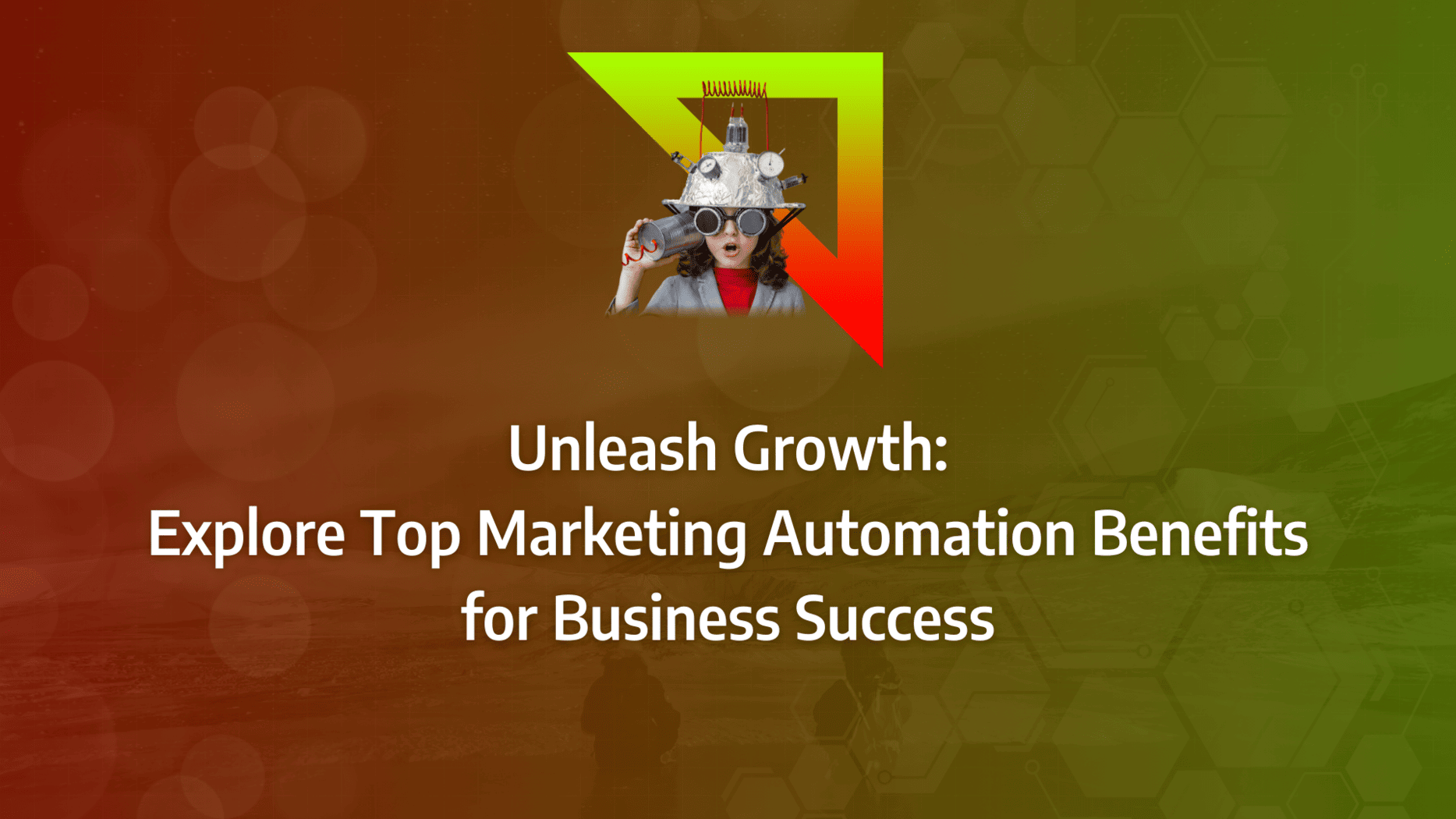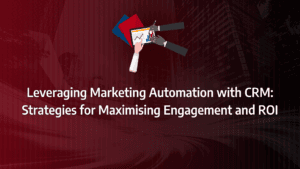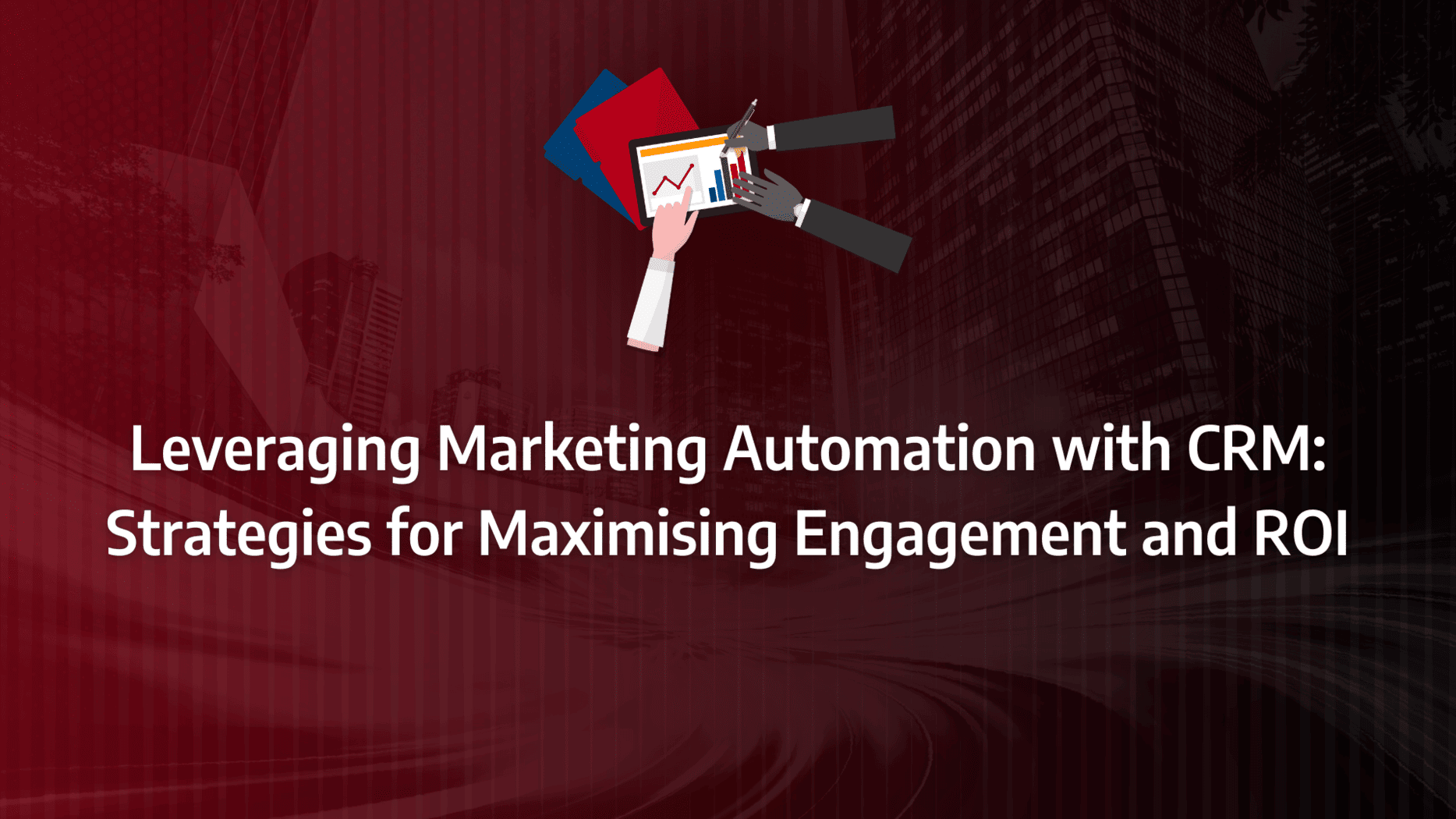Are you finding it challenging to scale your marketing efforts while maintaining the same level of personalisation and efficiency? In today’s fast-paced business environment, manual marketing processes can slow you down and prevent your team from reaching its full potential. That’s where marketing automation steps in. By automating repetitive tasks, refining customer segmentation, and optimising lead nurturing, marketing automation tools empower your business to achieve more with less effort.
In this guide, we’ll explore the top benefits of marketing automation & show you how to implement these tools effectively. Whether you’re looking to enhance customer engagement or streamline your operations, this step-by-step guide will equip you with the strategies you need to unlock the full potential of marketing automation.
- Marketing automation enhances lead nurturing by automating repetitive tasks and allowing personalised, consistent communication.
- Customer segmentation is refined through automation tools, leading to more targeted and effective marketing campaigns.
- Efficiency and time savings are significant benefits, enabling your team to focus on strategic initiatives rather than routine tasks.
- Implementing marketing automation requires a strategic approach, including selecting the right tools and integrating them into existing systems.
- Staying ahead of emerging trends, like AI integration and predictive analytics, will keep your automation strategies relevant and effective.
- Continuous optimisation of your automation processes ensures you are maximising the benefits and aligning with business goals.
What is the Main Goal of Marketing Automation?
At its core, marketing automation is a suite of tools crafted to streamline and optimise some of the most labour-intensive tasks within modern marketing and sales operations. From automating lead qualification to centralising digital campaign creation, the overarching aim of marketing automation is to bring simplicity to an increasingly complex business environment, where speed and efficiency are paramount.
By implementing an automated marketing strategy, you can remove the need to manually execute each individual email, message, campaign, or post. The best marketing automation platforms empower you to pinpoint your audience, create the most relevant content, and trigger actions automatically based on pre-set schedules or customer behaviours. Once your campaign is live, your focus can shift to other priorities while automation ensures your efforts continue running smoothly. Over time, you can assess the data generated and make necessary adjustments to refine your approach. This capability not only saves valuable time and resources but also drives higher revenue and return on investment (ROI), all while enabling you to focus on growing your business.
How Does Marketing Automation Work?
Marketing automation platforms are fuelled by data. Customer information is gathered from multiple touchpoints, such as email interactions, website activity, app engagement, and social media behaviours. With this data, businesses can construct a comprehensive, 360-degree view of each customer, enabling a more targeted and personalised approach.
Once the data is collected, marketing automation benefits become apparent as the platform streamlines processes like segmentation and targeting. It swiftly identifies the right audiences at scale, automatically tailors messaging based on customer profiles, and delivers personalised communications across multiple channels—email, mobile, social media, and web—all in just a few clicks. Whether your customer base consists of 100 or 100 million, marketing automation ensures efficient and effective personalisation at every step.
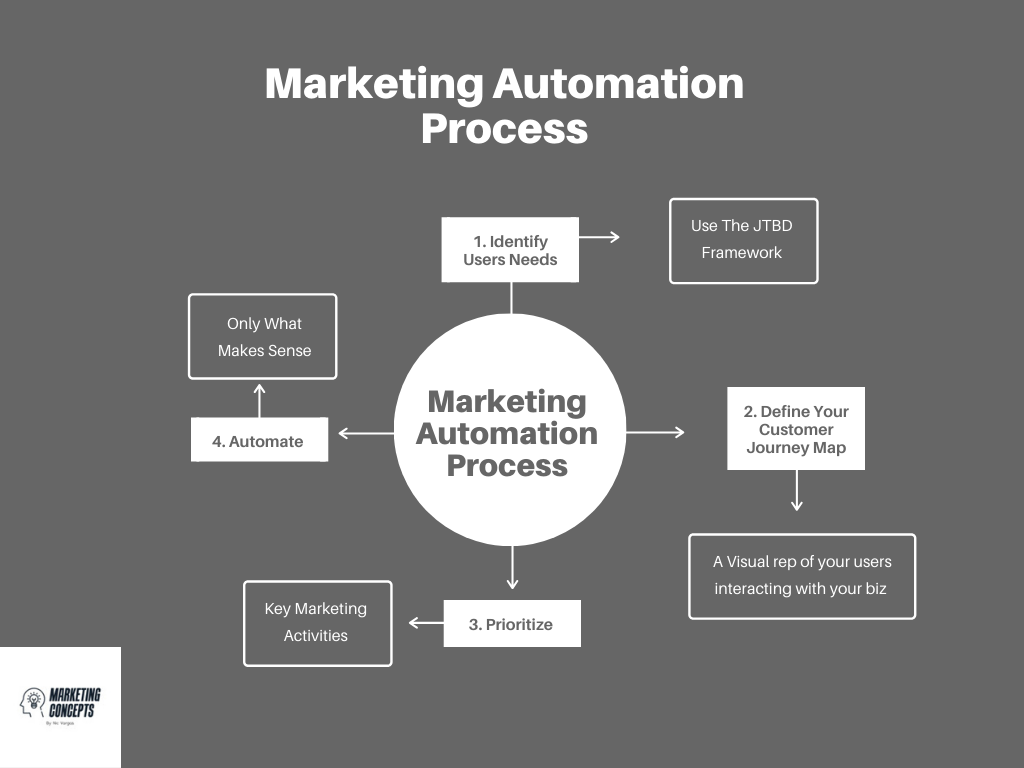
A Practical Example: Hosting a Webinar
Consider the scenario where a marketer is planning to host a webinar to showcase a new product or service. Here’s how marketing automation platforms seamlessly integrate into this process:
- Invitation Email: The marketer sends out an automated email inviting new leads to the webinar.
- Form Submission: Interested leads fill out a form to RSVP for the event. The automation tool then adds them to a specific email list tailored for this audience.
- Nurture Campaign: Once on the list, attendees receive a series of automated follow-up emails. First, a thank-you message for attending the webinar is sent. A few days later, a link to download a related case study is provided to continue nurturing their interest.
- Sales Handoff: As soon as the leads download the case study, they are automatically passed to the sales team for direct follow-up. These leads are now further along the sales funnel and are more qualified to make a purchasing decision.
This structured approach, powered by top marketing automation tools, enables teams to optimise lead engagement without the need for constant manual intervention, ensuring a smooth handoff between marketing and sales teams.
What Matters Most?
Integrating data sources effectively is critical for maximising the benefits of marketing automation, as clients often find that personalised campaigns significantly outperform generic ones. Additionally, focusing on relationship-building through timely, relevant communications allows us to nurture prospects more effectively, a strategy that many clients discover enhances engagement.Get In Touch
The Top Marketing Automation Benefits
1. Reduced Costs
One of the standout marketing automation benefits is the significant reduction in costs. In Keap’s 2020 Customer Survey, small businesses highlighted time and resource constraints as their biggest challenge. Specifically, 22.9% of respondents revealed they were still manually collecting contact information via phone or in-person, rather than automating this process.
With the right marketing automation platforms, you can drastically cut down on labour costs. It’s like having one employee do the work of 50, thanks to the power of automation. By establishing a system for lead generation and nurturing, along with marketing campaigns, automation tools trigger actions based on predefined benchmarks. In just a few months, businesses can begin sending thousands of personalised emails each day, all handled through a simple autopilot system.
2. Time-Saving for Marketing Campaigns
Another key marketing automation benefit is the amount of time it saves on marketing campaigns. Many top marketing automation tools, like Keap, come equipped with drag-and-drop interfaces, allowing you to easily craft email campaigns, social media posts, and landing pages. And the best part? You don’t need to be an expert in technical design to make it work.
For example, one multimedia marketing company saved dozens of hours per month by using Keap’s pre-built email templates and campaign builders. On average, Keap users save 10 hours a week by automating repetitive tasks. Now, with features like Easy Automations, creating and managing campaigns has become even more seamless.
3. Lead Attribution
Lead attribution is another powerful feature offered by marketing automation platforms. This functionality allows you to deliver ads and content based on the source of your leads. Much like personalisation, lead attribution helps you focus on different segments of your audience with content that resonates best with them.
For instance, leads referred by another site may respond best to brand awareness ads, as this could be their first interaction with your company. In contrast, leads from direct traffic already know your brand and are likely to engage more with content about specific products or services.
4. Exceptional ROI
In addition to saving time and making the most of your leads, one of the most impressive marketing automation benefits is the remarkable return on investment (ROI). Companies that integrate automation into their marketing strategies consistently see better results, with those automating their marketing efforts experiencing a 53% higher conversion rate than those who do not.
Higher conversion rates naturally lead to more customers and increased revenue. On average, businesses see a 34% boost in revenue after implementing automation. What’s more, 75% of companies using automation report seeing an ROI within just one year, with many achieving results much sooner.
Source: InvespCRO
5. Supporting Team Members
While automation can take on much of the workload, it’s important to remember that it complements, rather than replaces, human insight and expertise. Automation tools streamline many processes, but a human touch is still necessary for managing the overall strategy.
Whether it’s an in-house marketer or an account manager from an external agency, someone needs to monitor campaign performance, look for optimisation opportunities, and ensure continuous engagement with your audience. Automated campaigns should be reviewed regularly to determine what’s working and what isn’t, with data-driven decisions informing any adjustments.
6. Aligning Marketing and Sales Teams
Effective collaboration between marketing and sales teams is crucial to driving business growth. Often, these teams share the same goals, such as generating qualified leads that convert into sales. A good marketing automation platform can bridge the gap between departments, enabling both teams to align their objectives without excessive back-and-forth.
Automation enhances communication by providing both marketing and sales with access to real-time, up-to-date data. This transparency ensures that both teams are working towards shared goals and making data-driven decisions that benefit the business as a whole.
7. Organising and Managing Data
Marketing teams handle vast amounts of data, and top marketing automation tools help to manage this information more efficiently. Automation software not only organises data but also keeps it updated in real time, ensuring it is readily accessible to the entire team.
Moreover, by automating data management, the risk of human error is significantly reduced. Mistakes are inevitable when handling data manually, but automation tools minimise these errors and allow teams to focus on higher-level tasks.
Overall, every business—regardless of size or industry—can benefit from the integration of marketing automation platforms. By freeing up time, boosting productivity, and increasing lead conversion rates, automation empowers teams to focus on what truly matters: driving sustainable growth and improving marketing performance.
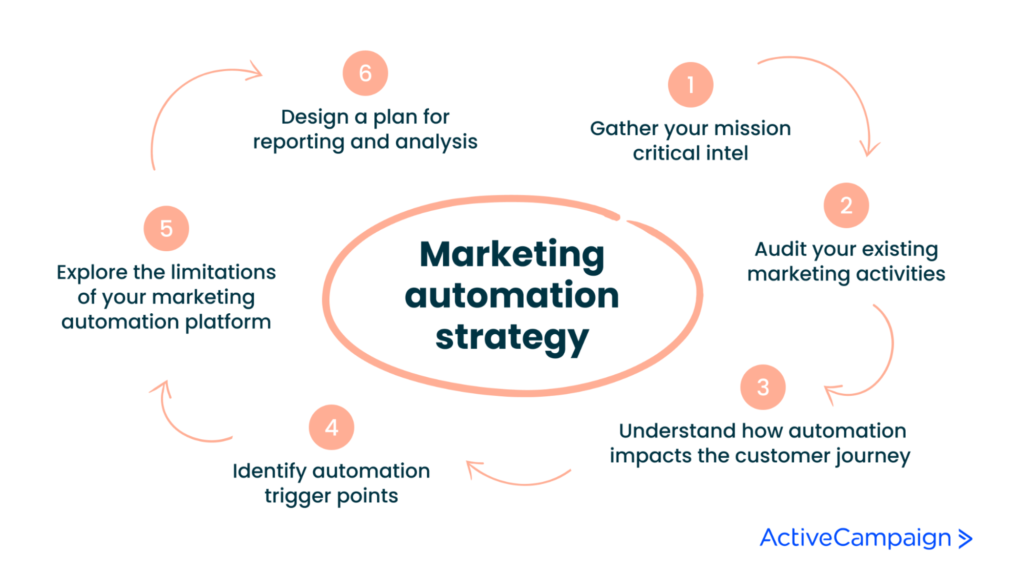
What Are Some Marketing Automation Best Practices?
1. Set Up Lead Scoring
One of the most critical marketing automation benefits is the ability to gauge customer interest through lead scoring. By analysing contact behaviour, such as interactions with your content or website, you can determine where potential leads sit within your sales funnel, enabling you to better target your automated campaigns.
Establishing a lead scoring model removes much of the guesswork. You assign numerical values to different actions—whether it’s reading a blog post, attending a webinar, or visiting your pricing page. These points, tracked via automation workflows, provide insights into a lead’s potential value to your business. With lead scoring in place, you’ll know which leads are primed for the sales team and which still need nurturing to maximise conversions.
2. Automate Internal Processes, Not Just Campaigns
A major advantage of marketing automation platforms is their ability to save precious time, particularly for small businesses striving to optimise efficiency with limited resources. Yet, many businesses only use automation for marketing campaigns, missing the opportunity to streamline internal processes as well.
Beyond automating marketing campaigns, automating operational tasks can free up more time and reduce the risk of human error. Depending on the functionality of your chosen top marketing automation tools, you can automate tasks like lead management, reporting, and even team workflows—further enhancing productivity across your business.
3. Track and Refine Performance
While marketing automation can handle much of the legwork, it’s not a set-it-and-forget-it solution. Continuous monitoring of your automation performance is vital to understanding what’s working and what isn’t. Regular analysis of metrics like open rates, click-through rates, and unsubscribes will allow you to fine-tune your strategy and improve engagement over time.
Audience engagement with your campaigns can reveal whether your content is resonating with their needs. For instance, high open rates suggest your messaging is on point, while a spike in unsubscribes may indicate your content lacks relevance. Don’t forget to analyse your results at a segment level to ensure you’re targeting the right audience with the right messaging.
4. Categorise Your Lead Types for Targeted Messaging
Another key marketing automation benefit is the ability to deliver highly targeted messaging based on lead segmentation. By categorising leads, you can enhance the user experience and personalise content for each stage of the buyer’s journey. Here’s a common framework for segmenting leads:
- Anonymous: Browsing your site but hasn’t provided personal data yet.
- Known: Self-identified but not yet actively engaged.
- Engaged: Interacted with your brand but hasn’t made a purchase.
- Marketing Qualified Lead (MQL): Qualified through lead scoring and ready for sales outreach.
- Sales Qualified Lead (SQL): Sales has reviewed and deemed them interested in your product or service.
- Won: Converted from a lead to a customer.
- Lost: Did not convert.
- Disqualified: Unlikely to buy.
By using automation workflows, you can tailor your messaging to each lead type, ensuring a more personalised and effective communication strategy.
Source: Moosend
5. Create Multi-Channel Experiences
While email remains a primary channel for most automated marketing, today’s consumers expect more. To fully realise the marketing automation benefits, businesses should be prepared to deliver a multi-channel experience that spans various touchpoints.
By combining email marketing with social media ads, SMS reminders, and other channels, you can increase your reach and engage customers where they are most comfortable. For example, you might use SMS for time-sensitive communications like appointment reminders, while running social ads to reinforce your message. Relying on a single channel limits your ability to connect with potential customers, so adopting a multi-channel approach will maximise your opportunities for engagement.
What is the First Step in Developing an Automation Strategy for Your Business?
Identifying Goals and Objectives: The first step in developing a successful marketing automation strategy is to clearly define your business’s goals and objectives. Before diving into automation, you need to understand exactly what your organisation aims to achieve through the use of marketing automation platforms. Whether the goal is to increase efficiency, improve lead nurturing, or streamline data management, aligning these objectives with your broader business strategy is critical. By doing this, you ensure that every automation decision you make supports the overall growth and performance of your organisation.
Mapping Out Business Processes: Once your goals are defined, the next step is mapping out your existing business processes. This phase is all about identifying which tasks are repetitive and manual, and therefore prime candidates for automation. By thoroughly analysing each workflow—from marketing and sales to customer support—you can pinpoint the areas where automation would have the most impact.
Through this process, you’ll gain a deeper understanding of your operational flow and see where bottlenecks occur. This is key to recognising opportunities for improvement, enabling you to decide where automation can be implemented to increase productivity and efficiency.
Selecting Processes with High Impact: Not every process is equally suited for automation. The key is to focus on the tasks that will deliver the most substantial marketing automation benefits when automated. These “low-hanging fruit” processes often involve highly repetitive tasks that consume a great deal of time and resources. Automating them can lead to immediate, noticeable improvements in your team’s productivity and operational efficiency.
Ask yourself: what daily activities are currently consuming the most time? Which tasks could automation relieve, providing significant time savings for you and your team? Starting with low-risk processes ensures that even if errors occur during the initial implementation, they won’t have a major impact on your business.
Choosing the Right Processes to Automate: One common mistake businesses make when developing a marketing automation strategy is selecting the wrong processes to automate. Choosing an inappropriate process can lead to wasted time, resources, and, ultimately, a failed project. It’s essential to start with processes that are highly suited for automation—ones that will provide the strongest results and prove the value of automation early on.
By beginning with the right use case, your business can build momentum and demonstrate the effectiveness of your chosen marketing automation platforms, setting the stage for future success.
Allocating the Necessary Resources: The final, but equally important, step in crafting a robust automation strategy is resource allocation. This involves selecting the right tools and technologies that are best suited to your specific business needs. Whether you’re opting for top marketing automation tools or more specialised software, the tools you choose can make the difference between a smooth, successful rollout and a project that doesn’t meet expectations.
Our Tactical Recommendations
From our experience, automating feedback loops can significantly enhance campaign performance, as clients often discover valuable insights for continuous improvement. Additionally, focusing on quality content distribution rather than sheer volume through automation usually yields better engagement outcomes. Finally, leveraging automation for effective segmentation allows us to create highly targeted campaigns that resonate better with audiences, a tactic clients frequently find crucial for driving results.Get In Touch
What Are Some Good Free and Open-Source Marketing Automation Tools?
In today’s competitive business landscape, choosing the right tools and techniques for marketing is essential. Your choices will directly influence the future of your business. One of the key decisions you’ll make is selecting the right marketing automation platforms, particularly those that are free or open source. This decision could significantly impact your ability to streamline operations, increase efficiency, and ultimately save valuable time.
The challenge, however, lies in the sheer number of options available. The market is flooded with different top marketing automation tools, each offering unique functionalities. But how do you know which tool is right for your business? We’re here to help guide you through this process, exploring the best open-source software solutions that could revolutionise your marketing efforts.
What Is Open-Source Marketing Automation?
Open-source marketing automation refers to using open-source software to automate marketing activities. These marketing automation platforms offer flexibility and freedom, enabling businesses to customise marketing strategies in a cost-effective way. Open-source tools allow users to modify, view, and distribute the source code to tailor the software to their specific needs.
By integrating these tools into your marketing efforts, you can automate repetitive tasks such as sending emails, posting on social media, and tracking business analytics. The result? A streamlined process that saves both time and resources while boosting marketing effectiveness.
Types of Marketing Automation Software
There is no shortage of marketing automation benefits when it comes to adopting the right tools. However, selecting the right tool requires a clear understanding of your business objectives and marketing strategy. Are you focusing more on email marketing, or are social media channels your primary concern? Different businesses will have different needs, so before you begin, take time to define how you want to engage with your audience and what message you want to deliver.
Below are some of the different types of top marketing automation tools suited to various marketing objectives:
1. Email Automation Tools
Email automation tools help you personalise and segment email content for recipients, automating your messaging for better targeting. These tools nurture potential customers, guiding them towards conversion. Additionally, email automation tools come with analytics capabilities, allowing businesses to measure the success of campaigns and refine future strategies.
2. Social Media Automation Tools
Social media automation tools allow businesses to manage multiple social media channels in one platform, saving both time and effort. With these tools, you can schedule posts, automate responses, and track key metrics across your social media campaigns. This not only helps increase efficiency but also takes your social media marketing to new heights by maintaining consistency across various platforms.
3. Drip Campaign Automation Tools
Drip campaign automation tools are designed to send a pre-defined series of emails over a set period. Drip marketing helps businesses maintain an ongoing connection with their audience through personalised and targeted content. This type of automation is especially useful for nurturing leads, onboarding new customers, and encouraging specific actions based on behavioural triggers.
4. Lead Management Automation Tools
Lead management automation tools enable businesses to capture and manage leads more effectively. These tools automate the qualification and assessment process, ensuring that each lead is properly nurtured through the sales funnel. By setting specific criteria and triggers, businesses can act on every opportunity, increasing the likelihood of converting leads into paying customers.
5. CRM Automation Tools
CRM (Customer Relationship Management) automation tools assist businesses in managing customer data and enhancing interactions. Integrating CRM with marketing automation platforms allows you to streamline workflows, improve lead generation, and boost conversion rates. These tools are especially useful for businesses looking to maintain a strong relationship with their customers and make data-driven decisions.
6. Marketing Automation Analytics Tools
For businesses that thrive on data, marketing automation platforms with analytics tools provide valuable insights. These tools allow you to track, measure, and evaluate the performance of your campaigns, helping you make informed decisions about future marketing efforts. By analysing key metrics, you can optimise your strategies for maximum effectiveness.
Top Marketing Automation Software for You to Use
1. Mautic
Mautic is a highly versatile, open-source marketing automation platform that empowers businesses to streamline their operations, enhance customer engagement, and drive business growth. This robust tool offers a suite of features, including a comprehensive social media marketing module, allowing organisations to connect with their target audiences seamlessly across multiple channels.
Mautic makes it simple to design and launch engaging landing pages, craft personalised email campaigns, and create dynamic workflows that elevate the customer experience. Additionally, it offers powerful tracking capabilities, enabling businesses to monitor their marketing activities, analyse performance, and make data-driven decisions that inform future strategies.
Dashboard
Mautic’s intuitive dashboard presents essential customer and sales data in an easily digestible format. You can customise the dashboard to align with your unique business requirements, rearranging graphs and data points to provide a clear overview of your marketing efforts.
Mautic Features
With Mautic, you can automate key marketing processes such as lead capture and nurturing. By integrating inquiry forms, landing pages, and calls to action, the system collects valuable data and automates follow-up actions like sending emails, SMS, or web notifications, all aimed at increasing conversions. Furthermore, Mautic offers social media monitoring and integrates smoothly with CRM systems and APIs to further enhance your marketing capabilities.
2. Mailchimp
Mailchimp is renowned for its role in transforming how businesses manage their email marketing efforts. This well-established tool enables organisations to automate personalised email marketing campaigns with ease. It simplifies the process of creating, executing, and analysing campaigns, helping businesses engage their audience effectively.
Mailchimp allows users to manage their email subscriber lists, track open rates and click-through rates, and measure the overall success of their campaigns. The platform also offers pre-designed templates that make creating visually appealing and professionally designed emails a breeze.
Mailchimp Features
The free version of Mailchimp offers users up to 1,000 emails per month for up to 500 contacts. Some of its standout features include:
Create Campaigns
Mailchimp provides a wide variety of ready-made templates that streamline the creation of emails, landing pages, and even digital ads for platforms such as Google, Facebook, and Instagram. This versatility allows you to execute omnichannel campaigns that reach a broader audience.
Integrate Applications and Web Services
Mailchimp’s ability to integrate with other apps and services, such as Shopify, enables businesses to collect customer data and automate personalised emails based on user behaviour, boosting conversions. Furthermore, Mailchimp leverages generative AI technology to assist marketers in creating highly engaging content that resonates with their audience.
3. Mailtrain
Mailtrain is a user-friendly, open-source marketing automation tool focused primarily on email campaigns. It’s an excellent alternative to Mailchimp for businesses that require a straightforward and efficient solution for email marketing. Mailtrain offers the essential features you need to create campaigns, segment users, and send personalised emails without the bells and whistles of more complex platforms.
Mailtrain Features
- Tags: Mailtrain’s tagging feature allows you to segment your audience easily, ensuring your messaging is highly targeted.
- Campaign Builder: The campaign builder is simple yet effective, making it easy to set up and automate detailed email marketing campaigns.
- Unlimited Recipients: Unlike some tools that limit the number of recipients, Mailtrain offers the ability to manage an unlimited number of user profiles and recipients, giving you greater flexibility in scaling your campaigns.
4. Odoo
Odoo is an all-in-one workflow automation platform that integrates hundreds of apps into a cohesive system. Its extensive capabilities and smooth integration across its suite of applications make it one of the top choices for businesses seeking a comprehensive, open-source marketing automation platform.
Odoo Features
- Blanket Updates: Odoo applies usability updates across all its integrated apps simultaneously, ensuring a consistent user experience.
- Odoo Studio: With Odoo Studio, you can design custom applications, create advanced screens, and build detailed reports tailored to your specific business needs.
- Odoo + Community: While Odoo’s core apps are highly integrated, the platform also supports a wide variety of community-developed apps, expanding the functionality and customisation possibilities for your business.
